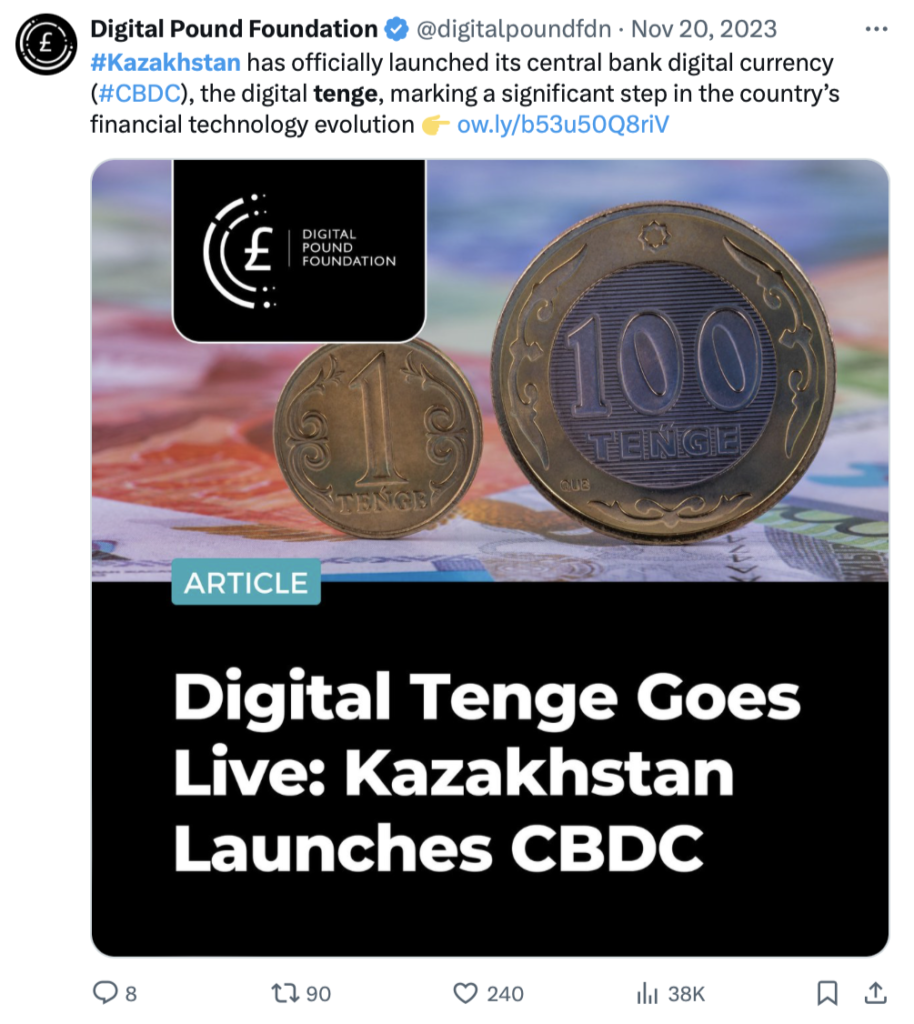The National Bank’s latest initiative demonstrates the benefits of programmable central bank digital currency.

Kazakhstan has introduced a new pilot project for its central bank digital currency (CBDC) to demonstrate its programmability potential.
Collaborating with the Ministry of Finance, the National Bank of Kazakhstan (NBK) showcased how the digital tenge can streamline value-added tax (VAT) reimbursement processes.
CBDC Accelerates VAT Reimbursement
NBK’s chief digital officer, Binur Zhalenov, shared on LinkedIn that VAT was automatically identified in business-to-business transactions using the digital tenge, cutting exporters’ refund wait times from 70-75 days to just 10-15 days, with an aim to enable “instant reimbursement in the near future.”
This efficiency gain is credited to the elimination of manual checks by the State Revenue Committee tax authority.
Zhalenov also mentioned ongoing pilots to incorporate the digital tenge in public procurement, targeted financing from Kazakhstan’s sovereign wealth fund, and investment subsidies.
He wrote, “These initiatives demonstrate the versatile applications of programmable money in enhancing government processes and financial operations.” Currently, 40 billion tenge (about $81.8 million) circulates in digital form.

Digital Tenge Programmability and Development
Kazakhstan’s work on a CBDC began with a pilot in February 2023, with programmability as a central feature to combat corruption.
Later that year, the Center for Interbank Settlements was restructured into the National Payment Corporation to support CBDC infrastructure development.
In November 2023, a second pilot for the digital tenge illustrated both retail and wholesale applications.
Local banks issued Visa and Mastercard debit cards linked to CBDC accounts, while wholesale use cases included creating a digital tenge-backed stablecoin, tokenizing gold, and enabling cross-border transactions via SWIFT.
One project that highlighted the CBDC’s programmability involved using the digital tenge to fund a rail line from central Kazakhstan to the Chinese border.
In this case, the digital tenge was “marked” to be used “only to organizations that have fully fulfilled the required obligations.”

